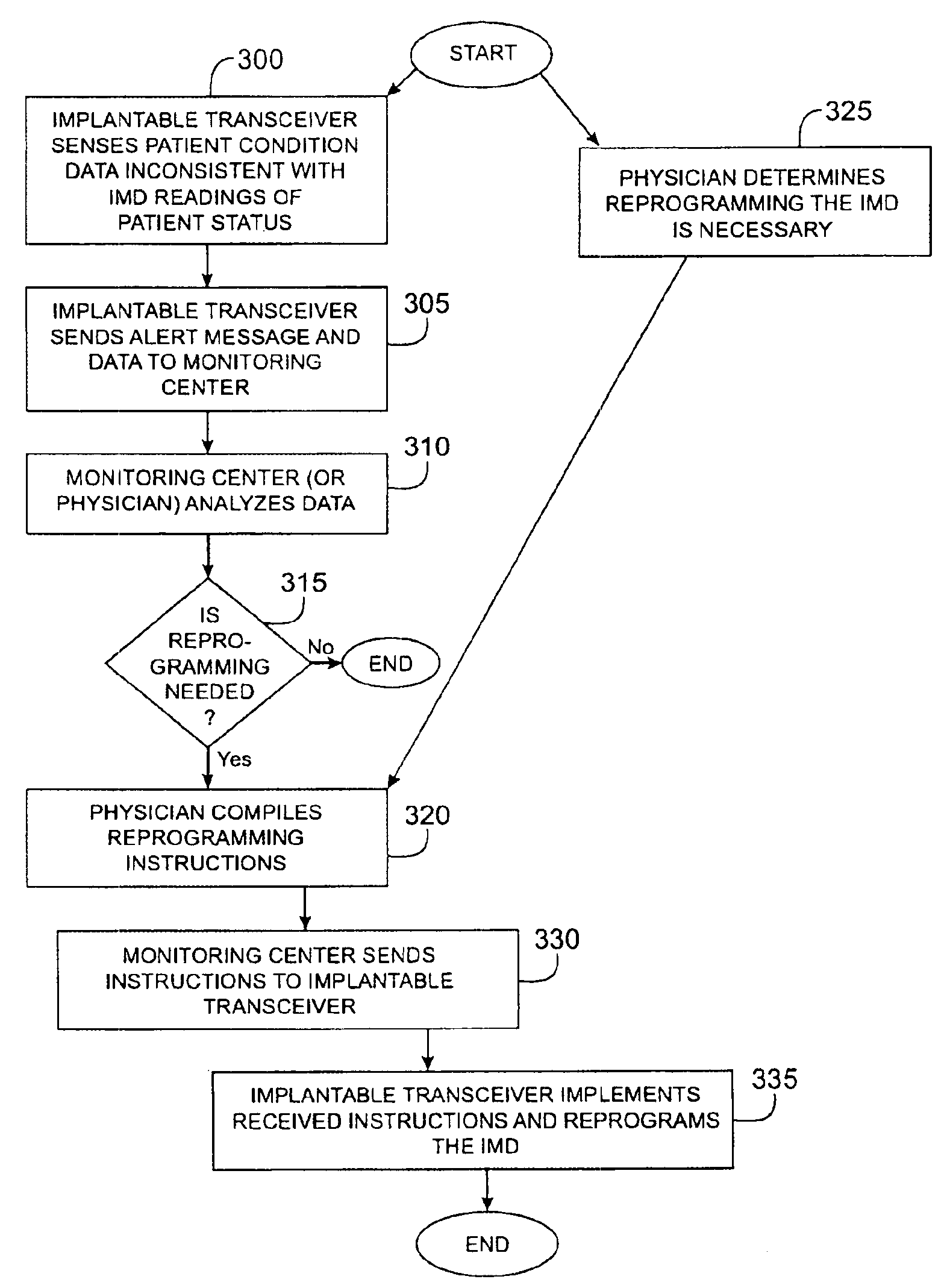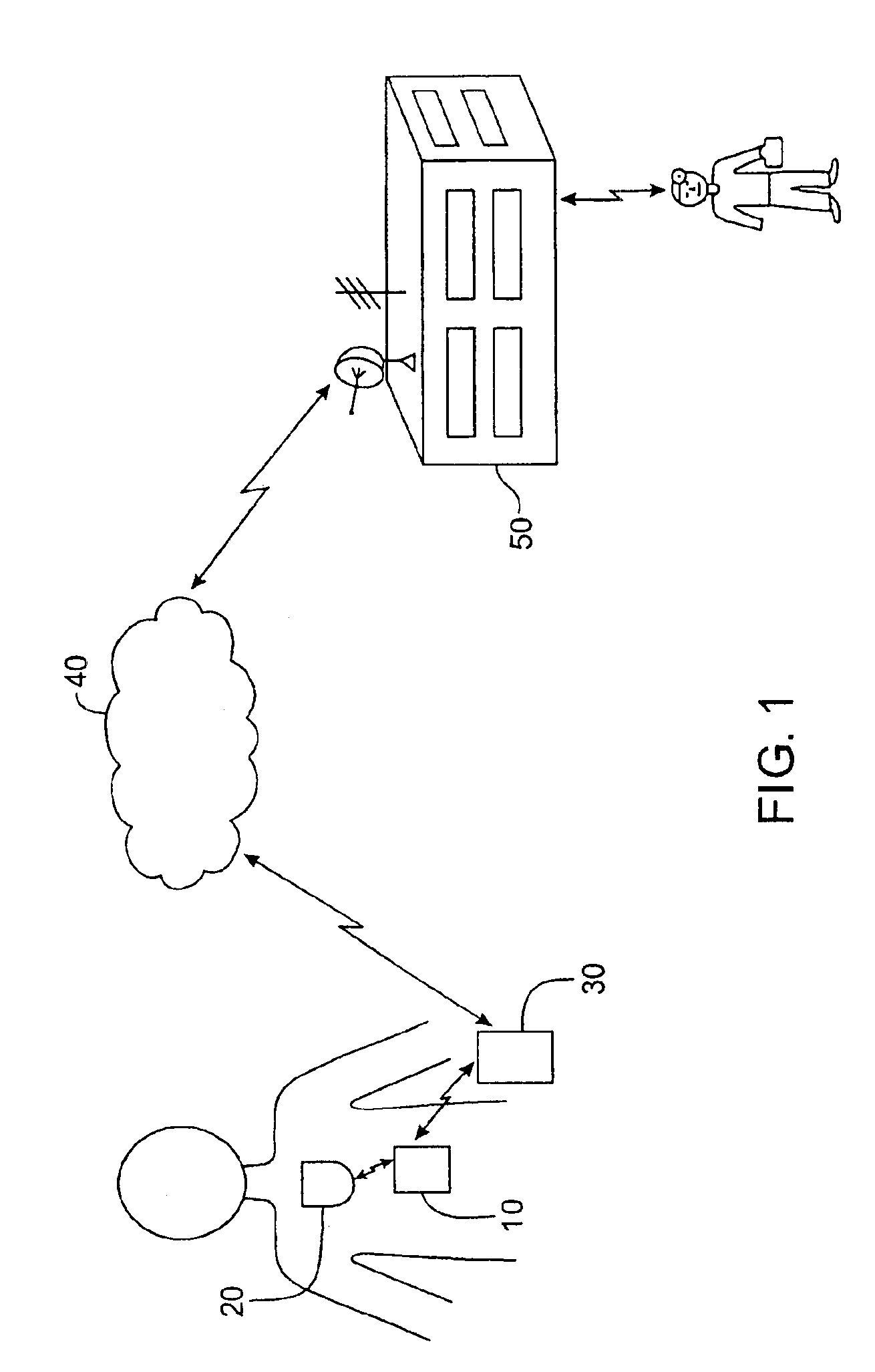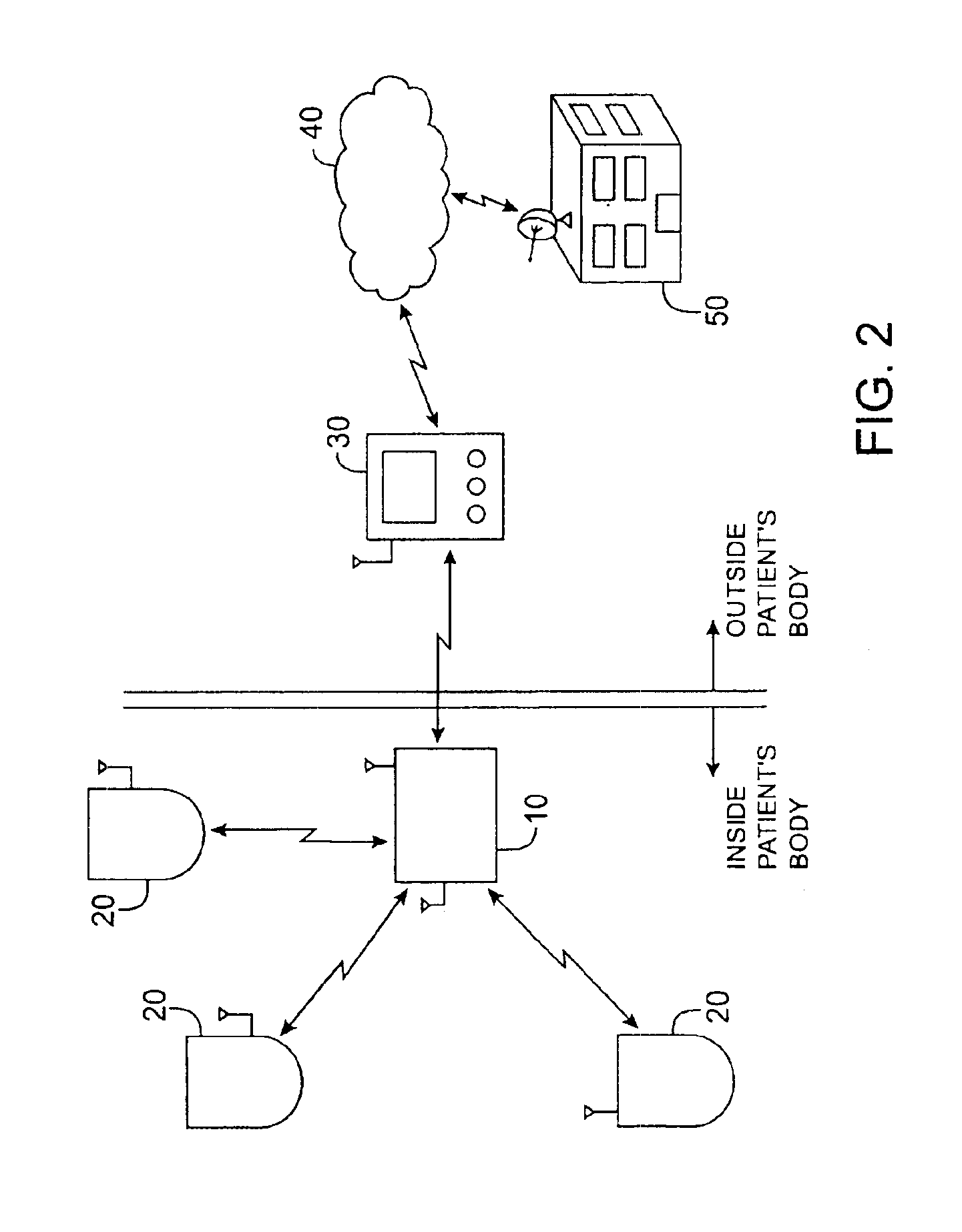Method and apparatus for monitoring and communicating with an implanted medical device
a medical device and communication method technology, applied in the field of communication systems, can solve the problems of short communication interface, high cost, and patient trauma, and achieve the effects of facilitating reprogramming, monitoring and recharging, and simplifying surgery
- Summary
- Abstract
- Description
- Claims
- Application Information
AI Technical Summary
Benefits of technology
Problems solved by technology
Method used
Image
Examples
Embodiment Construction
[0034]FIG. 1 illustrates one embodiment of the communication paradigm facilitated by the invention. An implantable transceiver 10 is implanted within a patient's body in close proximity, and so as to and communicate in both directions with, an IMD 20. The implantable transceiver 10 may be physically attached to the IMD 20 or it may be free-floating in the patient's body. The implantable transceiver 10 may otherwise be attached to the patient's body as well. For example, the implantable transceiver 10 may not be implanted within the patient's body, but rather be taped or otherwise secured to the outside of the patients body in close proximity to the IMD 20 within the patient's body. In some embodiments, the implantable transceiver 10 can be mechanically attached to the MD 20, while still using a transceiver to communicate with the IMD 20 and remaining electronically independent. The term “electronically independent” refers to the absence of hard electrical connections and does not ex...
PUM
 Login to View More
Login to View More Abstract
Description
Claims
Application Information
 Login to View More
Login to View More - R&D
- Intellectual Property
- Life Sciences
- Materials
- Tech Scout
- Unparalleled Data Quality
- Higher Quality Content
- 60% Fewer Hallucinations
Browse by: Latest US Patents, China's latest patents, Technical Efficacy Thesaurus, Application Domain, Technology Topic, Popular Technical Reports.
© 2025 PatSnap. All rights reserved.Legal|Privacy policy|Modern Slavery Act Transparency Statement|Sitemap|About US| Contact US: help@patsnap.com



